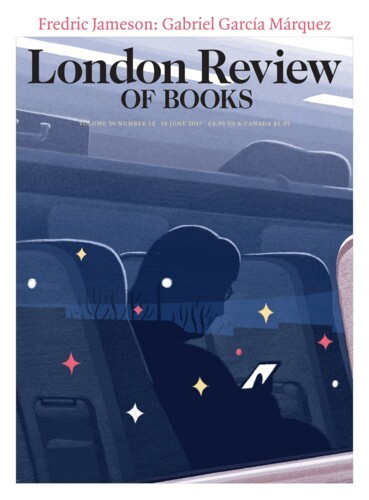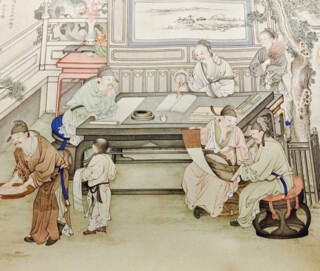Visitors arrive in throngs at the National Palace Museum in Taipei from mainland China, queuing up to see the extraordinary collection of Chinese art: bronze, jade and ceramics, as well as painting and calligraphy, the best anywhere in the world. Taipei is the home of the old imperial collection, evacuated in 1933 from the Forbidden City before the fall of Beijing to the Japanese. After a long journey around southern China, packed in crates, and a trip to the Royal Academy in London, the pick of the collection was sent to Taiwan where Chiang Kai-shek’s Nationalist Guomindang Party had fled after being defeated by the communists. It was stored in caves outside the city of Taichung, and later installed in the National Palace Museum, built specially for it in the subtropical hills of northern Taipei.
Before visiting the museum I spent some time looking through books of Chinese painting, making a list of works to see. One expert I spoke to warned me not to get my hopes up – you’ll be lucky if any of the famous works are out of storage, he told me, and it won’t be easy to request viewings. The hanging scrolls, handscrolls and album leaves – the three main formats for Chinese painting – are just too old and fragile to be easily displayed. Considering the history of the collection, it’s remarkable that these works, painted on silk and paper, have survived at all. They have suffered looting, displacement and destruction, from the Mongol invaders of the 13th century to the British troops who ransacked the Qing palaces in 1900 after the Boxer Rebellion. They brought back to London one of the earliest extant Chinese paintings, the sixth or seventh-century Admonitions Scroll, which shows stories and instructive scenes from the lives of women at the Jin court. Now at the British Museum, it is displayed with what from the Taiwanese perspective must seem alarming regularity, for eight weeks every year. At the Palace Museum paintings that are especially old or important can go on view for forty days every three years, but generally speaking they don’t. Even the curators aren’t allowed to see works like Guo Xi’s Early Spring (1072) between their rare outings.
Very little survives from the early periods of Buddhist and Confucian painting, and T’ang Dynasty painting, from the seventh to the ninth centuries, is incredibly rare (the Admonitions Scroll is probably a T’ang copy of a fourth-century original). The earliest hanging scroll on display during my visit was Boats and a Riverside Mansion, traditionally attributed to the ninth-century painter Li Sixun. The silk has darkened and the colours faded, but you can still see the extreme refinement of the tiny brushstrokes, the infinite pains taken to define figures and foliage.
The landscapes painted by Northern Song artists from the tenth century form the first great surviving tradition of Chinese painting. For more than two hundred years they made monochrome ink paintings of mountains rising from the mists, culminating in Fan Kuan’s Travellers among Mountains and Streams, a monumental, glowering landscape. Its darkened silk serves only to heighten the drama of the scene: a waterfall streams down a narrow cleft – a strip of bare material – splits in two and disappears behind the roof of a secluded monastery. It reappears as streams gushing into a channel behind the massive rocks in the foreground. The mountain seems a living force here; according to one contemporary, it has ‘water as blood, foliage as hair, haze and clouds as its spirit and character’. None of the Northern Song paintings is currently on view at the Palace Museum, although a cabinet of smaller album leaves – paintings attached to folding mounts – shows the contrasting Southern Song style of soft ink washes that followed it.
The other great tradition in Chinese painting is that of the scholar-artists, or ‘literati’, which developed in various guises between the tenth and 16th centuries. They typically painted in a rough, expressive style, using ink sparsely to reflect their aristocratic manners and to dissociate themselves from the paid professionals of the imperial court. Many of them became recluses – it seems to have been the fashion – and spent their days in the mountains, or studying ancient examples of the ‘three perfections’: painting, poetry and calligraphy. They refused to sell their works, preferring to exchange them or give them as gifts. Here, at least, the Palace Museum has a first-rate example on display, Wen Zhengming’s Zhong Kui in a Wintry Grove, a hanging scroll made in 1534. The demon-queller Zhong Kui stands huddled in a leafless forest, the trees sketched with thin, dry brushstrokes. Nature is the animating force in Wen’s paintings, the human figures remain passive, listening to the world around them.
Centuries before landscape became an independent genre in the West, painters in China were finding ways to represent the meeting of the human mind and the natural world. Paying little attention to conventions of perspective and lighting (there are almost no cast shadows in the early works), Chinese painting instead conveys a unique and absorbing sense of time. At the Palace Museum four handscroll paintings are displayed completely unrolled, including the Qing dynasty Gathering of Scholars, painted with great charm and liveliness of detail, and the much earlier Elegant Gathering in the Western Garden, a Ming dynasty scene of Chinese scholars occupying themselves with calligraphy, music, painting and conversation. These scrolls, some of which are eight or nine metres long, were designed to be read from right to left; as you shuffle along the unfolding scenes you lose yourself in the painting.
It’s easy to forget the political significance of these pictures’ presence in Taiwan. With every change of government, most recently from the pro-Chinese Guomindang to the pro-independence Democratic Progressive Party, a new director of the Palace Museum is chosen. Lin Jeng-yi took up the position early last year when Tsai Ing-wen was elected as Taiwan’s first female president. It is Lin’s job to explain to the Democratic Progressive Party, and to the Taiwanese, why they should be responsible for a vast collection of Chinese art. Why celebrate the art of a country from which you are trying to separate, and which denies your right to exist? There is no official contact between the National Palace Museum and the Palace Museum in Beijing, which holds the other, more modest part of the imperial collection. A new branch of the National Palace Museum, devoted to a broader, pan-Asian version of art history, opened last year, though the curators have found it hard to shake off accusations of Chinese bias. At the opening, Taiwanese activists vandalised a set of bronze figures representing the 12 animals of the Chinese zodiac (donated to the museum by Jackie Chan), describing their action as a statement against Chinese cultural imperialism.
But the apparently monolithic nature of Chinese art needs itself to be deconstructed. Craig Clunas’s Chinese Painting and Its Audiences, published earlier this year, and first given as the A.W. Mellon lectures at the National Gallery in Washington, addresses some of the limited and misleading way in which these works have been defined over the centuries, within China and in the West.* Gombrich, for instance, characterised ‘Chinese painting’ on the basis of a single example from the Boston Museum of Fine Arts, A Fisherman’s Abode after Rain, now thought to be by the 13th-century artist Xia Gui, which he used as the basis of his theory of the ‘beholder’s share’ – the way we imaginatively perceive images as a way of completing them. This is itself an imaginative projection, according to Clunas: the diversity of images made by painters in China ‘undercuts all such attempts to generalise about what “Chinese painting” is in essence’.
Clunas constructs his own history of Chinese painting by looking at different audiences through time – scholars, emperors, merchants, and then, in the republican era, the ‘nation’ and the ‘people’. Many of the illustrations are of figurative paintings, and dwell on the way viewing itself was a pictorial subject; images of paintings are often ‘embedded’ in other paintings, for instance. Art historians have conveniently ignored the intellectual precedent set by Chinese painting, Clunas argues, so that they might show modernity as an entirely Western creation. Painters in East Asia were reflecting on conventions of representation centuries before European artists did so. Expanding the definition of ‘Chinese painting’ means including many artists who have been ignored, or who were expelled from the canon as part of the quest for a pure and recognisable style. Two curious examples point to the great variety in Chinese art: the 19th-century painter known as Lamqua, whose oil portraits of Hong merchants share the academic Victorian style of his teacher, the itinerant English painter George Chinnery, and, a century earlier, the Milanese painter Giuseppe Castiglione, who spent most of his career in China working under the name Lang Shining. His influence led to European naturalistic tendencies infiltrating the ‘purity’ of Chinese painting.
Clunas’s globalising approach undermines the old idea that Westerners can never truly understand Chinese painting. After a couple of days looking at the collection at Taipei, European painting began to seem to me gaudy and kitsch, too much obsessed with originality and optical realism. Clunas points out that it’s still seen as natural for the Chinese scrolls in the UK to be held in the British Museum rather than the National Gallery, but rather than misclassification, the first barrier to understanding Chinese painting is the difficulty of seeing the works themselves.
Send Letters To:
The Editor
London Review of Books,
28 Little Russell Street
London, WC1A 2HN
letters@lrb.co.uk
Please include name, address, and a telephone number.



